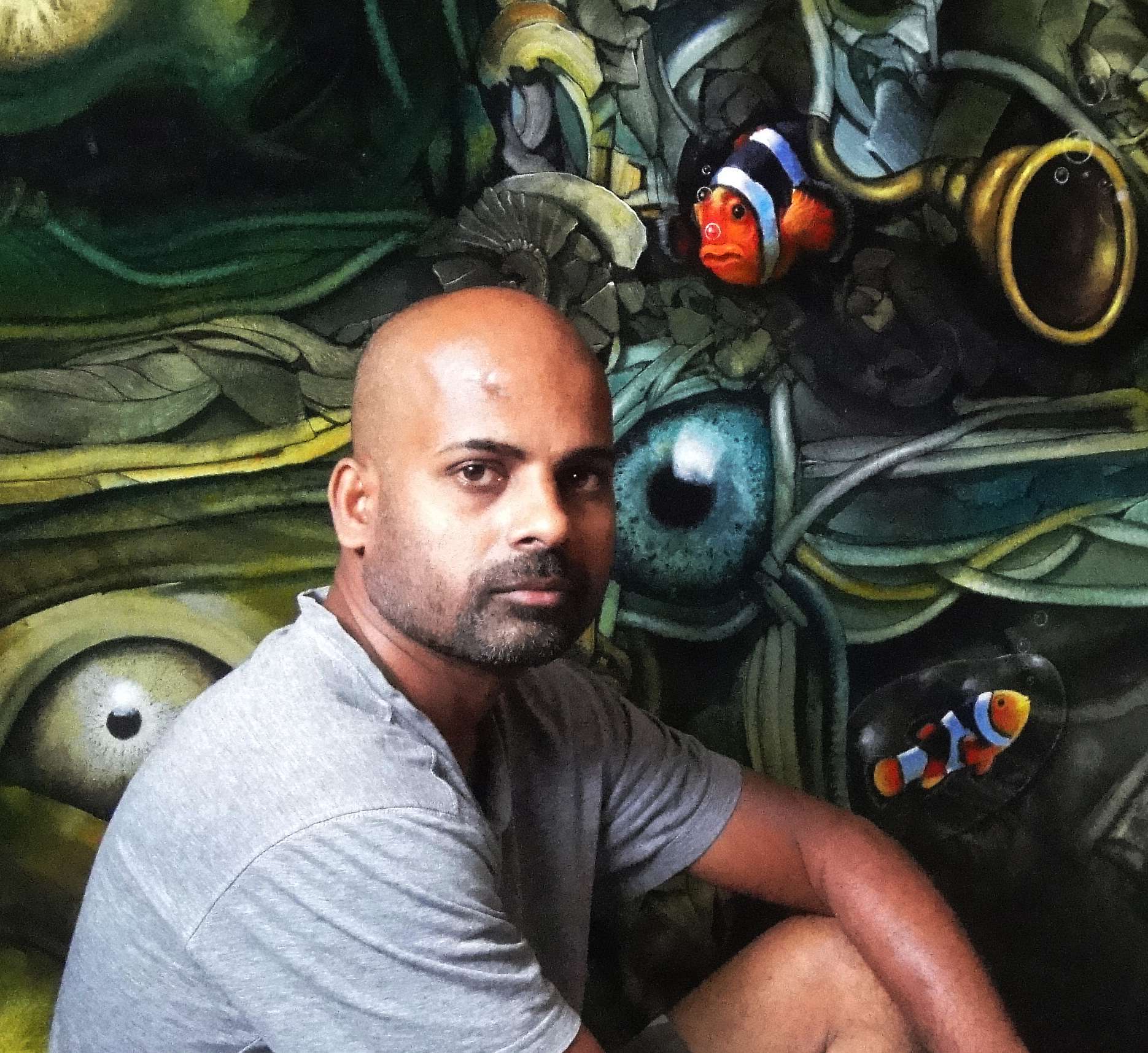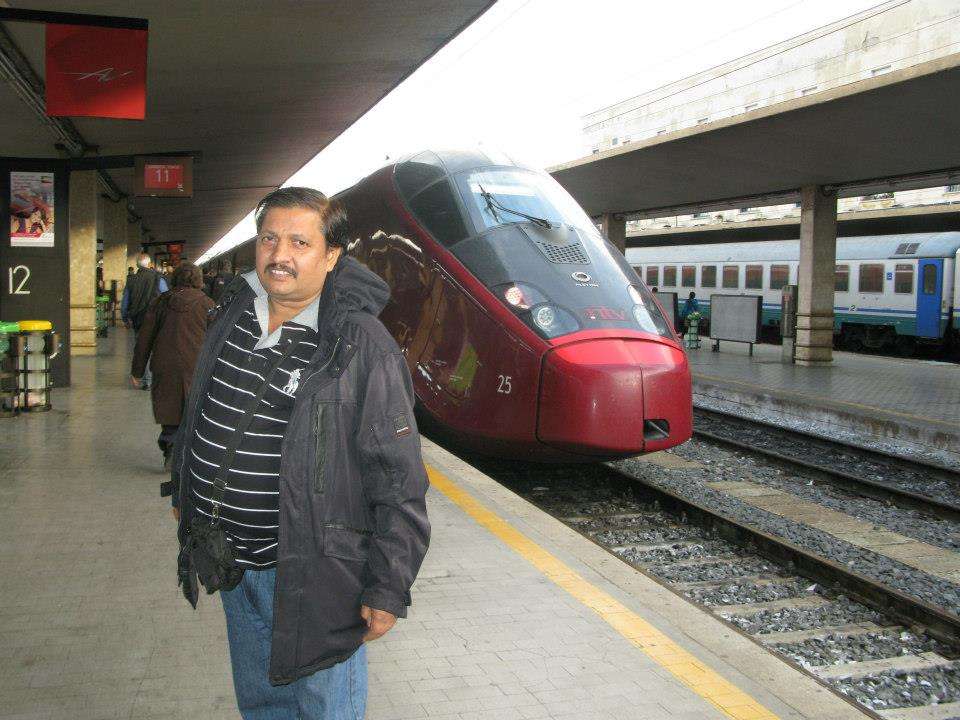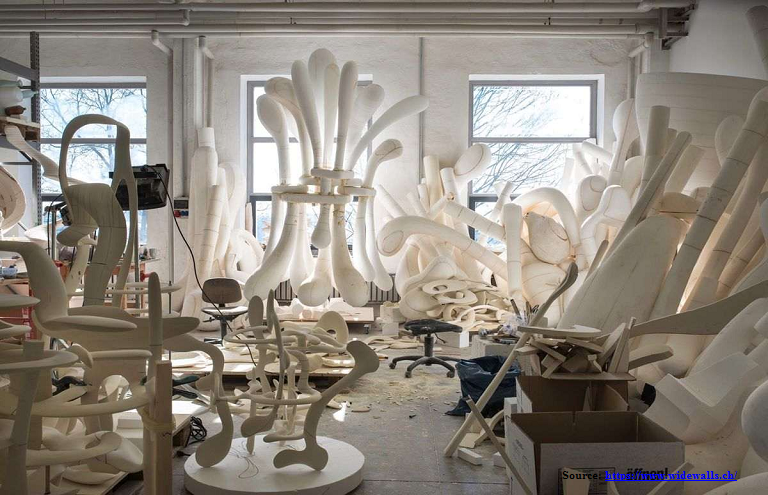
A true reflection of times of its creation, sculpture art is a constantly evolving continuum. Redefined, reworked, and reconsidered by the diverse practice of sculptors of the 20th century, the three-dimensional visual art form has certainly progressed a lot since the highly burnished marble busts and mesmerizing traditional Indian sculptures of the past. Between the 1960s and 1970s, infused with the spirit of experimentation, sculptors began exploring new materials, and different artistic approaches. Imaginative surrealist imagery, anthropomorphic abstraction, new materials, and uncanny combinations of new sources of energy, ideas, and a wide array of surfaces and objects became inherent to the medium. The dominance of the avant-garde genre of Abstract Expressionism marked with spontaneity, Geometric Abstraction and extreme Minimalism typified by simple forms, reduced sculpture to its most essential and fundamental features, wherein sculptors started creating works incorporating motion and monumentality that imbued contemporary abstract sculpture with a new outlook.
Today in the contemporary age, sculpture art has many manifestations. It’s far more than a physical thing, existing and defining beyond the realms of physical expanse, but also exploring the psychic space, conceptual space, political arena, as well as also our presence in it, our relationship to it.
Here’s a list of ten most influential contemporary sculptors from those involved in fabricating smaller works to some constructing monumental installations, with each defining a different vision of what sculpture can be.
-
Richard Deacon
One of the most prominent living British artists, Richard Deacon is famous for his large, lyrical open freestanding sculptures. Master at developing voluptuous abstract forms, he draws inspiration from curiosities of the everyday. Attempting to challenge himself, Deacon habitually changes materials and mediums, which range from a rope to laminated wood, stainless steel, polycarbonate, marble, clay, vinyl, foam, toys, corrugated iron, leather, which has resulted in a highly varied and diverse production of works over the past four decades. He believes that changing materials from one work to the next is a way of beginning afresh each time and thus of winding up what has already gone. He often describes himself as a fabricator who is involved in creating something up of fiction and imagination rather than truth.
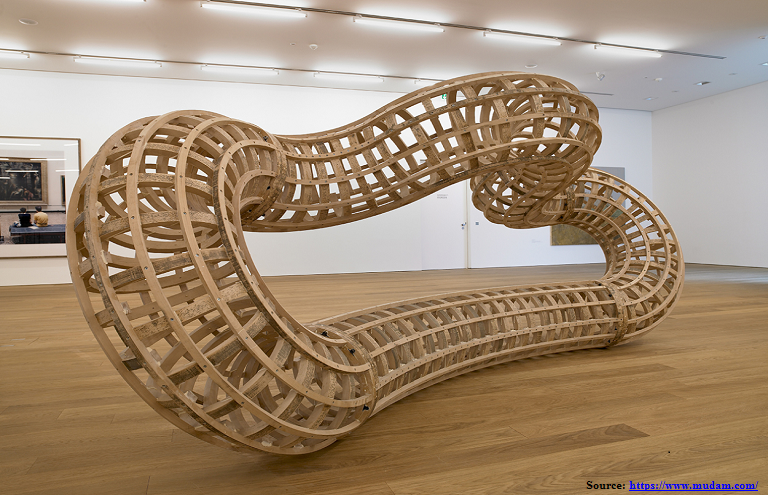
-
Jeff Koons
Widely regarded as one of the most important, influential, and controversial artists of the contemporary era, Jeff Koons is recognized for his creations expressing reverence for the popular culture and oversized sculpture artworks depicting seductive commercial materials such as balloon animals — produced in high chromium stainless steel with shiny mirror-finish surfaces. Using Neo-Pop aesthetics and employing wry appropriations of everyday consumer objects, Koons brilliantly plays with ideas of taste, pleasure, celebrity, and commerce. Pioneering new approaches to the readymade, he always attempts to test the boundaries between sophisticated advanced art and the mass culture, at the same time challenging the limits of industrial fabrication. Though there is huge controversy since he doesn’t construct his works, instead a team of over 100 assistants materializes his ideas, he is one of the most expensive artists of his generation. His famous sculptures for sale can be found only at the world’s most prominent galleries and international auction houses.

-
Sarah Sze
American artist Sarah Sze is widely acclaimed for her distinctive sculptures and site-specific massive installations that employ ordinary mundane objects from her collection of little things such as plastic plants, candies, packaging materials, and aluminum ladders. Drawing inspiration from Modernist practices and traditions, Sze attempts to explore the role of technology and the strong proliferation of information in the contemporary world, wherein the everyday objects are represented as caught in suspension. Her large-scale encyclopedic and accumulative landscapes often penetrate walls and stretch across museums and galleries, behaving as self-perpetuating systems, seemingly capable of growing, decay, and renewal on its own.

-
Robert Gober
American sculptor and life-size installation artist Robert Gober is extremely popular for his deceptively simple, usually evocative recreations of banal everyday items, often incorporating running water and theatrical lighting. His often disturbing sculpture art comprises distorted domestic objects surrounding us such as sinks, doors, playpens, beds, cribs, and more. Since the 1990s, the human body has become the focus of Gober’s research and practice which has resulted in the production of eerie pieces of sculpture art featuring legs coming out of walls or stalls with breasts with theatrical room-sized environments. Through his meticulous sculptures, Gober attempts to explore sexuality, relationships, nature, politics, and religion and sometimes reshapes his memories.
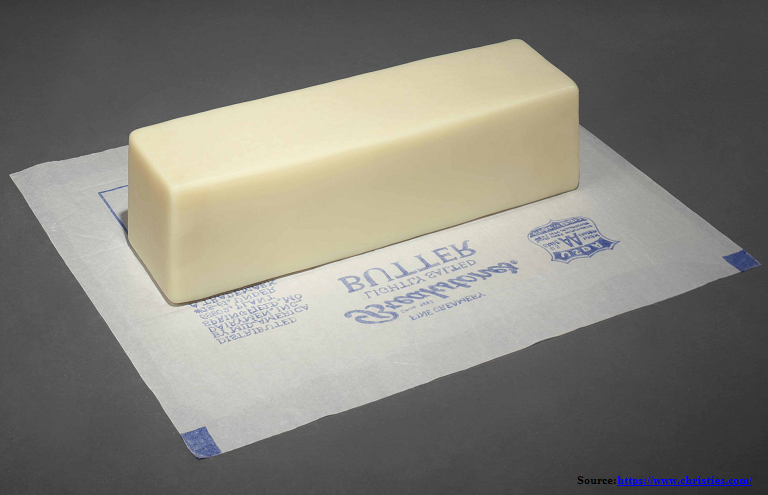
-
Anish Kapoor
One of the most influential sculptors of the contemporary era, British-Indian artist, Anish Kapoor gained recognition in the 1980s for his metaphysical site-specific creations, which manipulated the form and the perception of physical space. His monumental public sculptures that are imbued both with adventures in form and striking feats of engineering, along with rich colors and highly polished surfaces are admired worldwide. Most of Kapoor’s biomorphic and geometric sculptures are often in resonance with cultural sources of the ancient world including Indian sculptures, Egyptian practices, Greek and Roman mythologies. During his long artistic career, he has worked with a wide array of materials and mediums—mirrors, stone, wax, sandstone blocks, stainless steel, and PVC on a variety of scales. Kapoor’s main area of interest lies in exploring the negative space, that is the void — space full of what isn't there.
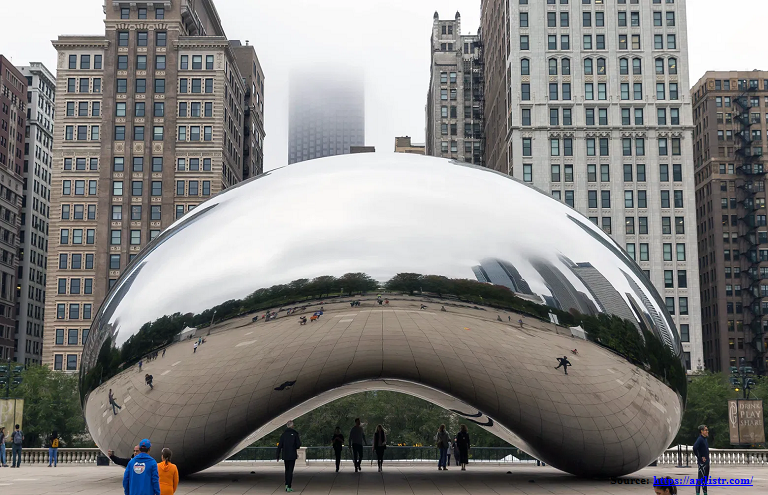
-
Damián Ortega
Through his uncanny works, Mexican sculptor Damián Ortega explores the economic, social aesthetic, and cultural spaces assembling a wide range of mundane objects. His spectacular sculptures often represent stories of both mythic import and cosmological scale, wherein he employs everyday objects including Volkswagen Beetle cars, paper bags, Day of the Dead posters, axes, chisels, hammers, and saws, locally-sourced corn tortillas, bricks, and other vernacular items. Employing his honed wit, intellectual rigor, and sense of playfulness, Ortega’s pieces are strong punning commentaries on politics and consumer culture. Though he began his career as a political cartoonist, today his famous sculptures for sale at high prices on some of the most renowned galleries.
-
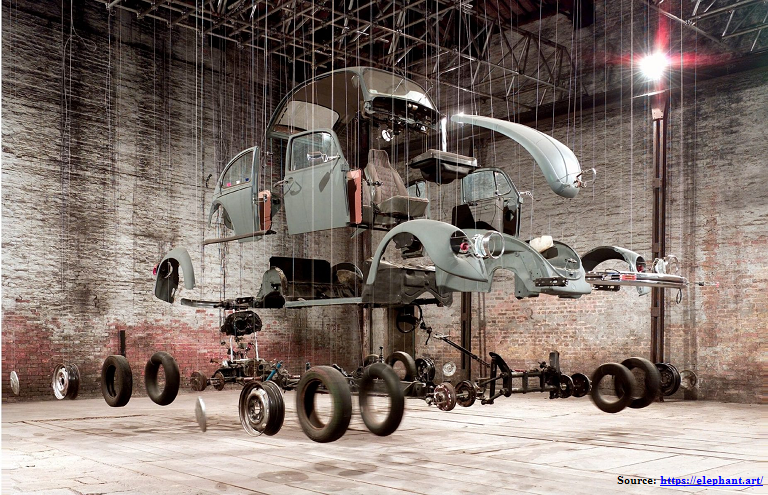
-
Antony Gormley
British sculptor, Antony Gormley is widely recognized for his large-size sculpture art and figural installations that investigate the relationship of the human body, time, and space. Fascinated by the human body, almost all his works take the human body as its main subject placed within a landscape or cityscape, wherein he often uses his own body as the basis for casts. Since the early 1980s, Gormley has been strongly drawn to examining the existence of humanity with the environment. Attempting to treat the human body as a place, rather than an object, Gormley has created several sculptures using varied materials, depicting the figurines in different positions (crouching, standing, kneeling, lying down). Also, some of his works portray distorting human figures such as elongating arms or replacing human features such as putting a cast beam in place of the head.

-
Kate MccGwire
British sculptor Kate MccGwire specializes in the medium of feathers, mostly from her collections. She creates sculptures with the beautiful, delicate material juxtaposed with discomfiting forms which redefine the parameters of everyday reality. Using this medium heavily loaded with symbolism, she brilliantly probes the notions of duality in beauty, disgust, malice, and tranquillity, at the same time exploring the interplay of opposites at an aesthetic, intellectual and emotional level. Her finished works have a consistent otherworldly element infused that seems highly appealing to our senses and power of reasoning.

-
Roman Langlois
A self-taught artist, Romain Langlois develops intriguing sculptures — from any and everything that surrounds us— that question the perception of the viewer. Owing to the perenniality and the vibrational quality of the bronze, Langlois mostly works with bronze. The inherent ability of bronze to capture and reveal infused emotions enables him to create highly expressive and anatomical sculpture art, mostly otherworldly. Since 2011, he has developed a strong fascination towards creating nature-inspired artworks, assembling common items like stones, branches, garbage bags, and trunks. Like a true alchemist, Langlois roots out the hidden beauty in things around, transforming these scraps, and infusing them with a new life and an entirely new look and feel.

-
Lynda Benglis
Regarded as a pioneer of a form of abstraction, American artist Lynda Benglis attempts to explore feminist politics, gendered stereotypes, and self-image through her works. She is admired worldwide for her radically re-envisioning of the sculpture art using wax and poured latex. Each of her pieces of art is always a result of materials in action, the fluid, and organic working process, in which the behavior of the materials helps determine the shape and final outcome. With her celebrated ‘pours’ of fluid substances, Benglis invented a new format that resembled paintings but eventually came off the wall to occupy the three-dimensional arena of sculpture. In some of her creations, rejecting vertical orientation as well as canvas, and brush, she has extended the famous drip painting technique of Jackson Pollock into three-dimensional space, spilling liquid rubber directly onto the floor of the loft and letting the rubbery puddles take its own form. Another viscous material that Benglis loves to play around with is wax. Often layers of molten beeswax are laid on a Masonite board, allowed to harden into ridges and loose furrows in a beautiful spectrum of pastel hues. Through bold explorations of the different art forms throughout her career, Benglis has tested the boundaries of painting, sculpture, and provocative videos. Of late, her investigations into the nature of materials have gone beyond wax and latex, she has been pushing the mediums of clay, glass, bronze, lead, gold foil, and even water beyond conventions.

Stunned? You should, each of these artists have redefined the sculpture art beyond its traditional realm.
Don’t forget to share your views and experiences of these new-age sculpture art in the comment section below.













